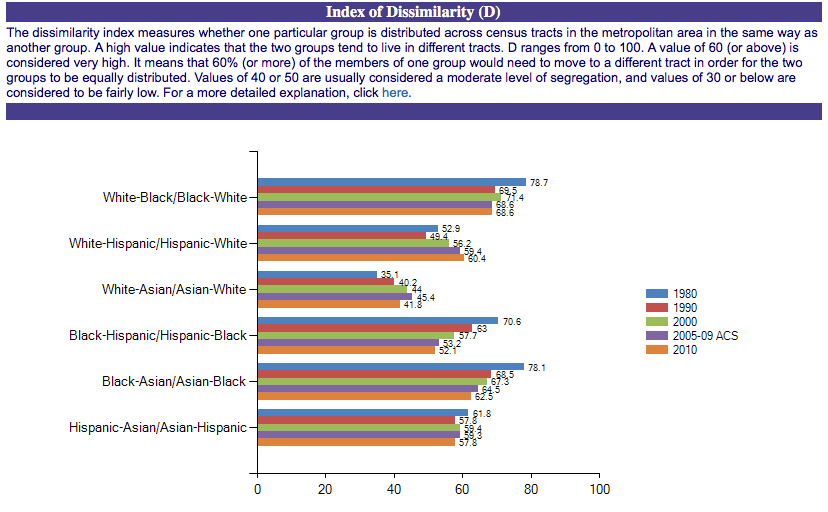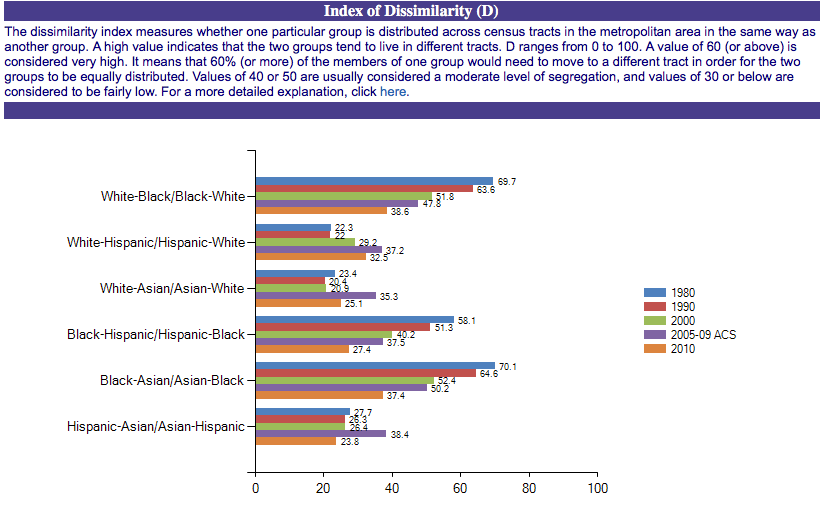In Texas, California serves as shorthand, a sort of rhetorical boogeyman, for politicians looking to warn of the supposed dangers of regulation. In the planning and development world of Houston, many West Coast cities could serve that role, including Portland. The Houston metropolitan area is positioned as the regulation-free expanse where market forces encouraged a sprawling mass of concrete. And the Portland metropolitan area is seen as one "where enlightened government planning has produced walkable, European-style urbanism," as Scott Beyer, owner of the Market Urbanism Report wrote in a recent piece comparing the two metropolitan areas.
The problem, of course, as Beyer points out, is that neither view is entirely correct. Houston does indeed have layers of regulations that govern its growth and, even with the Portland region's more hands-on approach to planning, the region has still seen its fair share of sprawl, according to Beyer. So which metropolitan area has done density and urbanization better, asks Beyer? Beyer sides with the more market-oriented of the two: Houston, citing the city's denser urban core, its strong residential construction numbers and what he describes as a "more impressive built imprint." On the placemaking front, Beyer finds Portland's approach more appealing.
With Portland facing an existential debate about the impact of a recent policy aimed at expanding affordable housing and Houston rethinking its development post-Harvey, the comparison is worth digging into and expanding, starting with the planning approach of each city and region itself. Despite the free-market reputation, Houston has a range of tools at varying levels used to guide its development. A Kinder Institute report on the city's land-use regulation found that "[t]he tools that exist in Houston are similar to those found in peer cities such as Dallas and Los Angeles. And in all three cities there are similar development patterns, especially in residential development." Likewise, its affordable reputation has been called into question, as Houston struggles to keep up with rising rents and transportation costs continue to burden families.
After Hurricane Harvey, Houston has had to wrestle with its rapid growth. Though the city passed new regulations for homes built, or significantly rebuilt, inside the 500-year floodplain, a Houston Chronicle investigation revealed that new homes are still being built in floodplains. Roughly 20 percent of new home permits issued after the storm, according to the investigation, were for homes in the floodplain.
Meanwhile, in Portland, the city is part of a three-county government entity called Metro, which sets the regional growth agenda, oriented around an urban growth boundary that some politicians, as well as outlying cities, have argued needs to be expanded to address issues of affordability.
Like Houston, the region has seen rising rents in recent years. In an effort to address affordability concerns in the city, Portland approved an inclusionary housing measure that would require certain new apartment developments to include a number of units set aside for renters earning below the median family income. After a recent apartment construction slowdown, some officials and developers blamed the new policy. But others have argued that the slowdown is the result of too much luxury construction. Indeed, writes journalist Kelly Kenoyer in the Portland Mercury, "Portland’s vacancy rate for apartments built in 2017 is 12 percent, compared to an overall vacancy rate of 5.7 percent. While the housing market remains tight for lower-income renters, there isn’t nearly as much demand for the more expensive housing that developers have been building."
So how have these two different approaches played out? In addition to the things Beyer considers, there are several other metrics worth comparing, while acknowledging that it's difficult to sort out the impact of any one policy on these sorts of measures.
Affordability
When it comes to affordability, the Portland metropolitan area had 23 affordable and available units for every 100 households earning 30 percent or less of the area median household income, according to the latest report tracking the gap from the National Low Income Housing Coalition. Houston meanwhile had only 19 affordable and available units for every 100 extremely low-income households. Houston, however, did a little better when it came to affordability for households at or below 50 percent area median income and 80 percent, with 47 and 99 affordable and available units for every 100 families, versus 42 and 88 in Portland.
But, as all Houstonians know, housing and transportation costs are closely related. Here, the numbers are again pretty similar. In Portland, residents spend, on average, 48 percent of their income on housing and transportation, according to the H+T Index from the Center for Neighborhood Technology. In Houston, the average share of income spent on the two expenses is 45 percent. The percentages are slightly elevated for both metropolitan areas, at 52 percent in Portland and 49 percent in Houston. It's worth noting that the data used in the index includes the 2015 American Community Survey and 2014 Longitudinal Employer-Household Dynamics, both of which don't capture recent minimum wage increases in the Portland area.
Furthermore, advocates and officials argue that Portland's new policy is producing results. Almost a year and a half after the inclusionary zoning policy took effect, "a total of 280 affordable rental units have either been built or are in development," according to the Portland Mercury.
Segregation
Free-market promoters have credited the Houston area's notable racial and ethnic diversity to the city's regulation-light atmosphere, but, some of the most diverse cities in the country are also some of the most segregated.
There are a number of different ways to measure residential segregation. One 2002 analysis of block-level integration between white and black residents, for example, found that only 6.7 percent of Houston residents lived on integrated blocks, meaning residents were at least 20 percent black and 20 percent white, compared to 10.4 percent of residents in Portland, according to the study from the University of Wisconsin-Milwaukee.

Houston's dissimilarity measures. Source: Brown University.

How Portland compares. Source: Brown University.
A more recent analysis from Brown University using a dissimilarity index for a number of years between 1980 to 2010, which looks at the evenness of spatial distribution of a group relative to another, found that Portland had significantly less residential segregation than Houston in 2010.
The Houston area was also among the most economically segregated major commuting zones, ranking in the top 10 in both 1990 and 2010, according to the Urban Institute. Portland, meanwhile, "consistently ranked among the 25 least segregated" commuting zones. Part of this, though, may have to do with the difference in population since the report also found that "the level of economic segregation is positively related" to the population.
Quality of Life
Here, Beyer writes that Portland "knows how to do public spaces" but credits Houston with "at least trying to catch up." Houston has embarked on some pretty high-profile projects, including the Buffalo Bayou Greenways 2020 plan, which earned a spot in the High Line Network. Still, Houston ranked 77 out of the 100 largest cities on the most recent ParkScore assessment. Portland ranked 6. Portland's parks represent almost 20 percent of the city's overall area and the city, along with non-profits and factoring in volunteer hours, spends $251.10 on parks per capita, according to the assessment. Houston's parkland takes up a similar share of the city's overall area at 18 percent but its per capita spending is way lower at just $38.08.
Beyer also argues that the overall approach to green space in Portland creates qualitatively different experiences. "The mentality here is that the imprint of these spaces should remain smaller, to accommodate pedestrians," he writes. "Especially in downtown, the blocks are smaller, the streets are narrower, the parks are more intimate, and so forth."
One could also consider how a region's approach to density and development has influenced its transportation and safety. Here, Houston again, struggles. The Houston metropolitan area is among the most dangerous and deadliest when it comes to traffic fatalities. But both Houston and Portland have been dealing with rising fatalities recently. In 2017, Portland saw 45 traffic deaths while 242 people died in crashes in Houston, according to data from the state department of transportation, leaving Houston with a much higher per capita fatality rate. Both cities have responded or begun taking steps to respond. In addition to Portland's Vision Zero plan, the state also granted the city the ability to lower speed limits on city streets. Houston, meanwhile, has launched an investigation of a handful of dangerous intersections in the city for evaluation and recommendations for improvements and has expanded a Safer Streets initiative beyond the five pilot Complete Communities neighborhoods.
There are countless other ways to think about how different regional and local approaches to density and planning play out, but the above measures suggest that Houston's approach may need some adjustment.

